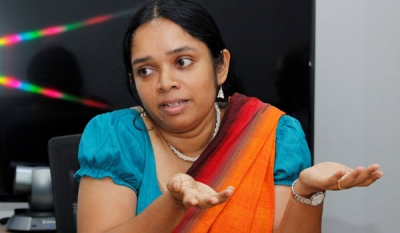This highlights the importance of making sure the food we eat is not contaminated with potentially harmful bacteria, parasites, viruses, toxins and chemicals.
Food can be contaminated at any point during production, distribution and preparation.
Everyone along the production chain—from producer to consumer—has a role to play to ensure the foods we eat are met with proper safety standards.
In this article, Dr. Krishanthi Premarathne, Research Member at Sri Lanka Safety and Quality Assurance Laboratory and a senior lecturer at Wayamba and Peradeniya Universities of Sri Lanka talks about the importance of food safety, along with insightful reveal on poultry products of Sri Lanka where she especially addressed the rumors pertaining to ‘Yellow Chicken’.
Q. Food safety in any country is a vital part. Can you please explain what food safety is and what aspects we need to fulfill to achieve maximum safety when it comes to food in Sri Lanka?
A. Food safety is concerned with safe sources of all foods and their positive nutritional impact on people.
This encompasses inspection and enforcement of all stages from producer to consumer, from being 100% free of chemical and microbial contaminations to safe storage, transportation, labeling, preparation, processing, cooking, and service.
Q: With the fast track life style, our healthy diet habits tend to drift away most often. How can we fall into the right track again?
A. No matter how much you may want to make healthy choices, it can feel like there simply isn’t time.
Being cautious on personal food habits, lessening fast-food and sugar consumption fall into the food safety category and are consumer controlled aspects; them making healthier diet choices will boost food safety and ultimately will contribute to a healthier society.
There are ample ways to make a healthier living namely, filling up your meals with Iron, turning the big meals into soups a salads, eat full meals rather than snacking all day, eat mindfully knowing what you are consuming and what nutrients it offers, daily consumption of vegetables, pump up the protein, turn TV time to fitness time and stay hydrated at all times.
Q. Currently, we find pesticides in products, hormones in milk and antibiotics in meat, leaving consumers to suffer major health risks. What is your view on this?
A. Modern production of foods incorporates a wide range of synthetic chemicals potential that are damaging to humans if they are exposed to high concentrations, or to low concentrations over an extended period of time.
Yet, usage of these pesticides is unavoidable since it has become essential for the production process.
However the effects can be reduced by boiling, peeling or washing the residue off and adding spices that cuts off all toxic entities in the cooking process or the best thing is simply to grow your own vegetables and fruits.
When it comes to meat products, cutting off the excess fat and skin is a good practice to follow as it could have absorbed unwanted pesticide residue.
However, the Sri Lankan consumer is falsely advertised about having hormones injected to broiler chickens.
When considering the time cost and the fact that hormone imports are restricted, there is no way that these statements are true.
Q. Consumers often pay attention to the colour factor when selecting meat products and it has been rumoured that most consumers assume that the yellowish hue in yellow Chicken is due to expiration. What is your feedback with regard to this?
A. The yellow hue in the chicken meat is mainly due to the presence of the natural colourant named Carotenoids.
Corn is a primary natural source of carotenoids that have been used in chicken feed over the past few decades by many well reputed poultry farms mainly in America, United Kingdom, Australia and India.
Birds as a whole are unable to produce Carotenoids in their body hence it enters a body through the food intake of a chicken.
Yellow corn and maize as chicken feed produce ample amounts of Carotenoids and they are stored in high concentrations in the skin, liver, fat and most noticeably in Egg’s Yolk.
Otherwise, the yellow hue does not imply expiration or bad quality.
Q. Are there any specialties in chicken with the yellow hue comparison to the regular chickens?
A. Yes, corn is a grain filled with fiber which consists of 73% water, also calories, vitamin and mineral supplements which positively benefit to regulate a normal growth, increase bone health, optimal kidney functioning ,maintenance of good heart rate and acts as a source of anti-oxidants of chicken.
It only contains 3% sugar and the protein percentage is in the range of 44 – 75%, therefore makes an excellent diet for the growth of healthy chickens.
Similarly, Corn fed chicken variety contains higher volumes of Vitamin A than regular chicken that are generally fed with a grain based diet, hence it is ideal for better vision, a healthy immune system and cell growth.
Further, Irish poultry experts as well as the American, British, Australian and Indian poultry professionals have proven that the golden hue produced in corn-fed chicken simply is a measurement of exposing the quality standard and have stated that using corn as chicken feed does boost the taste of the chicken and gives an exceptionally succulent roasted flavor once cooked.
Photo caption : Dr. Krishanthi Premarathne, Research Member at Sri Lanka Safety and Quality Assurance Laboratory and a senior lecturer at Wayamba and Peradeniya Universities of Sri Lanka talking about the importance of food safety.


























